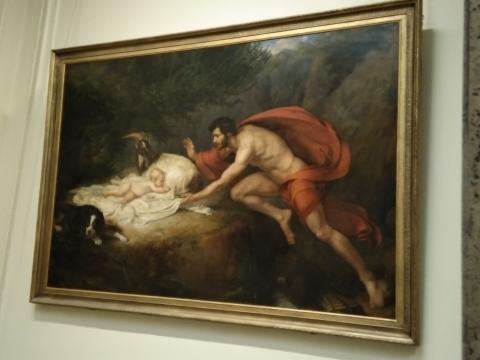The Finding of Aesculapius (1822–1839)

The Finding of Aesculapius was painted by Giovanni Tognolli between 1822–1839 and hangs at Liverpool. He depicts the classical Greek god as a shimmering baby, being found by a shepherd. Aesculapius was the god of healing, and one of the more salubrious deities of the Greek and Roman pantheon.
Proponents of comparative religion will doubtless note the similarities between Aesculapius’ nativity, and that of Jesus Christ’s. The latter, however, is no healing god, though He can and does heal. The theologically weak wing of the evangelical church will describe the Christian’s salvation as healing, though this is in itself inadequate. As a single illustration, healing is not without biblical warrant, but it is not the primary focus. Christ does not merely heal you of sin, for sin is more than just an unpleasant condition or painful ailment. It is a death sentence; it is a legal condemnation; it is a total and utter ruination. The ancient myths may have exposed their adherents' need for the gospel and even a Saviour, but none of their gods stooped so low as the Living God; none of them thought humanity so contaminated as the God of heaven before whom the seraphim cry “Holy, Holy, Holy”; none of them became a real man to save us from spiritual death.
And they sang a new song, saying:
“You are worthy to take the scroll,
And to open its seals;
For You were slain,
And have redeemed us to God by Your blood
Out of every tribe and tongue and people and nation,
And have made us kings and priests to our God;
And we shall reign on the earth.”
Rev. 5:9-10 (NKJV)
- Log in to post comments


 Sunday Worship 10.45am & 6.00pm
Sunday Worship 10.45am & 6.00pm